- Home
- James Rollins
The Demon Crown: A Sigma Force Novel Page 18
The Demon Crown: A Sigma Force Novel Read online
Page 18
Yet, out the other side of the BMW’s windows, a modern city beckoned, a metropolis of glass skyscrapers and angular architecture. In the new millennium, Tallinn had reinvented itself. What had once been a port city on the edge of the Baltic Sea, full of paper mills and match factories, had transformed into the Silicon Valley of Europe. Tallinn had more tech start-ups per capita than anywhere else. Even Skype was founded here.
Still, the people were proud of their history and celebrated it, like the festival under way now. Her group had been warned at the airport about Tallinna Vanalinna Päevad, or Tallinn Old Town Days. Men and women in period costumes crowded the medieval streets. Some climbed through the throngs on stilts. One stalked alongside their traffic-stalled vehicle on poles two stories high. All around, open-air stalls added to the congestion, selling local food or handicrafts.
A boy walked alongside their slowly moving sedan and knocked on their window. He held up a basket of Kalev chocolate bars and candy, all made in Estonia. He was dressed in a traditional loose linen shirt and trousers, both embroidered in a colorful pattern.
Monk pointed from behind the wheel. “We should pick up some candy for the girls.”
Kat lifted an eyebrow. “You want to give them more sugar?”
She suspected he really wanted the candy for himself. The man had an insatiable sweet tooth—and apparently he wasn’t the only one.
“Actually, I wouldn’t mind some chocolate,” Dr. Bennett said from the backseat, gawking at the midday festivities outside his window.
“Me, too,” Elena said with a grin.
Kat bowed to the majority and rolled down the window. The smells of sugary baked goods and sizzling meat piqued her own appetite. She bought several candy bars and a bag of caramels. She kept the bag for herself, purely for research purposes, of course, to evaluate the quality of candy manufacturing in Estonia.
As they cleared Old Town, the traffic finally opened back up. Despite the delay, it had taken them less than half an hour to drive from the Tallinn airport to the center of the city. Their destination appeared ahead: the Eesti Rahvusraamatukogu, or the National Library of Estonia.
“Impressive,” Elena said, eyeing the massive structure.
The sprawling eight-story brick building spanned the entire city block. Its façade looked like a Stalin-era tomb, a featureless gray limestone slab decorated with a single rosette window, all roofed over by a grim pyramid. The utilitarian design made a certain sense as the library’s construction had begun when Estonia was still under the iron thumb of the Soviet Union, but it was eventually finished after the country declared its independence in 1988.
The building now stood as a testament to Estonian fortitude.
But for their small group, the library was where they would seek to follow in the footsteps of Archibald MacLeish.
During the eight-hour flight here, Kat had read the former Librarian of Congress’s journal. MacLeish had arrived in Tallinn during a tense and bitter time, when the Soviets had come to occupy the city after driving the Nazis out with a series of savage bombing raids. Many civilians had been killed during the attack, including children. MacLeish had recorded the words found scrawled on the firebombed ruins of the Estonian Theatre, written by defiant locals: Varemeist tõuseb kättemaks! or Vengeance will rise from the ruins! At the time, MacLeish had been struck by the resilience of the people here, and even today the Estonians remained fiercely nationalistic, determined never to fall under occupation again, especially by the Russians.
It was also here where MacLeish had ended his search for the origin of James Smithson’s amber artifact—on the same day that “Little Boy” was dropped on Hiroshima. With the Japanese seemingly thwarted, MacLeish had abandoned his quest.
Leaving us to pick it back up again.
As Monk parked the car, Kat stared up at the looming building, momentarily overwhelmed by the enormity of their task. How could they hope to discover where Smithson had acquired his artifact . . . and do so in less than three days?
Elena must have sensed her despair and tried to reassure her. “The National Library is the largest in all the Baltic States. Besides what you see aboveground, there are two basement levels, where its most valuable books are stored. All told, its stacks hold over five million volumes, meticulously preserved in air-conditioned facilities. So, if there are any clues left behind by Smithson, they’ll be found here.”
As they climbed out, Dr. Sam Bennett craned at the expanse of the façade. He grated his palm over the stubble on his chin. “But where do we even begin to look?”
The entomologist was in his mid-sixties—though his hay-colored hair, sharp blue eyes, and ruddy skin made him look decades younger. Kat knew he still maintained a family ranch back in Montana and definitely looked the part of the cowboy. For the trip, he wore jeans, boots, and a plaid shirt, which he dressed up with a suit jacket.
Kat had noted Elena eyeing the man with not a small measure of interest. The librarian touched Sam’s elbow now and pointed toward the entrance. “The facility’s director, Gregor Tamm, should be waiting for us. He was kind enough to rally his staff to pull together anything concerning Smithson, especially the time he spent here. Hopefully there’ll be some clue as to where to search next.”
“Sounds good.” Sam smiled his appreciation. “Nothin’ like pulling a few strings to speed things along.”
Elena shrugged, blushing a bit. “One of the few perks of being the Librarian of Congress.”
Kat got them all moving toward the long flight of stairs up to the entrance.
Monk drew alongside her, taking her hand. “Ah, young love . . .” he whispered to her, nodding to the pair in front.
“Shush,” she scolded him, but she couldn’t hold back a smile.
Once through the imposing doors, a trim middle-aged man in a black suit strode toward them, his arm out toward Elena. His dark hair and thin mustache looked freshly waxed. He could easily pass as a butler in some aristocratic house.
“Tere tulemast, Dr. Delgado, welcome.” The man touched his chest with a palm. “I’m Director Tamm, we spoke on the phone.”
Elena stood straighter as she shook his hand. “Yes, thank you. I’m sorry to call you in the middle of the night and to impose on your staff like this.”
“No, no problem, I assure you. We were most happy to gather what you asked. Come with me.” He waved to the far side of the lobby. “We have a private reading room reserved for you.”
After introductions were quickly made, he guided them past several rare book exhibitions on the way to an elevator. They all piled into the cage. Once they reached the seventh floor, Tamm led them down a long hall flanked by bookshelves. The interior spaces here looked like a medieval castle, with cavernous galleries, tall archways, and bricked vaults. Statuary of mythical beasts graced pedestals and alcoves.
Kat noted a peculiar sculpture of a man with a rat’s body.
Before she could inquire about it, Director Tamm glanced back at the group. “I understand the Smithsonian hopes to learn more about its benefactor for an upcoming museum celebration.”
“That’s right,” Elena said haltingly, clearly uncomfortable with lying to a colleague.
Kat relieved her of this responsibility. “Smithson was an avid mineral collector, traveling across Europe to obtain unusual specimens. As you may know, his collection was lost during a fire in the nineteenth century. We’re hoping to rebuild his collection for an exhibit celebrating the Smithsonian’s founder.”
At least, that was their cover story.
“A most ambitious project,” Tamm acknowledged. “And what a glorious way to honor the man’s life. From what I’ve been able to glean overnight, Mr. Smithson’s esteem as a chemist and mineralogist has been glossed over by history, overwhelmed by his endowment to found your institution.”
“That’s what we’re trying to correct,” Elena said, sounding as if she were warming to the story. “To reveal the scientist behind the benefactor.”
<
br /> Tamm nodded and drew them to an arched wooden doorway. Banded and studded with iron, it looked like it could have come from an old Estonian castle. “This is a reading room normally reserved for academic scholars from our local universities in Tallinn. I’d be happy to leave you to review what we’ve gathered. Or perhaps, as I’ve taken the liberty of curating much of the material myself, I could help you with your work.”
“We’d certainly welcome your assistance,” Kat said.
“It would be an honor.”
Tamm opened the door and waved them into a room that looked like a medieval cloister. There was even a tarnished suit of armor standing in a corner, guarding tall bookshelves full of dusty volumes along all four walls. A single wooden table divided the room. Before each chair, a reading lamp overlooked a tilted dais meant to hold an open book.
Kat expected to see a crooked-backed monk laboriously working on an illuminated manuscript. Instead, a lone young woman with a braided blond ponytail stood by a computer station next to the room’s single window.
Tamm introduced her. “This is Lara. One of our newest researchers.” He smiled at her. “And my daughter.”
Monk chuckled. “So she’s following in her papa’s footsteps.”
“I couldn’t be happier.”
Kat noted the man’s beaming pride and the daughter’s slightly embarrassed expression. Kat suspected Lara preferred to stand on her own merits. Or it could simply be the universal embarrassment daughters of this age felt for a doting father. She wondered when her own daughters would become just as exasperated.
Monk had another worry, whispering to Kat as they all filed inside. “Let’s hope the girls don’t follow in our footsteps. I think we should start pushing them toward a safer career path, perhaps handling pillows.”
“Knowing those two, they’d end up smothering one another.”
“Well, that’s true,” Monk said soberly. “So then maybe accounting.”
With their daughters’ futures still undecided, Kat and Monk followed Tamm to the table. Hundreds of books, periodicals, and newspapers were neatly stacked across its length.
Kat felt a sinking despair at the sheer volume.
“As you can see,” Tamm said, “my daughter and I have been quite busy. But perhaps if I knew more about what you were seeking, I might be able to point you in the right direction.”
Kat nodded. “We’re doing our best to follow James Smithson’s footsteps across Europe as he collected his specimens. We hoped to learn why he came to Tallinn.”
“Ah . . .” Tamm turned to the table, waving his daughter over to help. “Then you came here to learn about merevaigutee, what you call amber.”
Kat was glad the director’s back was turned, so he missed her startled expression. Elena and Sam both glanced at her, just as surprised. Monk simply looked worried, as if he expected something malicious afoot.
Tamm missed the silent exchange. “You see, I know exactly why James Smithson came to Tallinn.” He turned back around. “It was because of a secret he was keeping involving amber.”
1:03 P.M.
How could the man possibly know this?
Puzzled and shocked, Elena took a step back. She bumped into Dr. Bennett. Sam caught her by the elbow and steadied her. His firm fingers gave her the strength to challenge the director.
“What do you mean?”
Tamm lifted a yellowed treatise bound in vellum from the table. “This is one of Mr. Smithson’s scientific papers. Its subject is quite esoteric, but we preserved a rare copy in our vaults because it pertains to our region’s history.”
Elena gingerly accepted the paper and read the handwritten title aloud. “An Account of Experiments with the Spirit of Amber.” She lowered the treatise. She knew from researching James Smithson that the man performed and recorded many of his own chemical experiments, but this was beyond her. “I don’t understand. What was he trying to accomplish?”
Lara answered, glancing down shyly. “I took the liberty of researching the topic. Spirit of Amber was also known at the time as ‘acid of amber.’ ” She pointed to the yellowed pages. “Even Mr. Smithson calls it that in his notes, where he explains how he created his own supply by heating up raw amber and distilling it into a whitish acidic powder. Today we know this compound as succinic acid.”
Monk cleared his throat, drawing Elena’s attention. She knew the man had an extensive medical background through his training with Sigma.
“Does that mean something?” Kat asked her husband.
Monk reached with his prosthetic hand for the treatise. Elena passed it to him. “Definitely want to read this. But I know about succinic acid. It’s produced by mitochondria in our cells as part of our body’s energy-generating system. It’s what keeps us alive.”
“But why would Smithson be experimenting with this spirit of amber?” Elena asked.
Kat looked worried and turned to Director Tamm. “Did Smithson perform these experiments here in Tallinn?”
“He did, but I’m afraid, if you read his notes, you’ll see he did not learn anything significant. It’s why he likely left these papers here and never officially published them. I believe he was keeping this all a secret.”
Elena knew the director was right. It was the same secret he took to his grave. Still, she wondered if Smithson might have left clues in those journals of his that were destroyed in the Castle fire during the Civil War.
If so, could he have hidden other clues elsewhere?
Before she could contemplate this, Monk turned to his wife. “Kat, I can tell you’re on to something.”
She dropped her voice, turning away from Tamm and his daughter. “From MacLeish’s account, Smithson had shared his drunken story of a mine disaster with a geologist here in Tallinn. Which suggests he must have already obtained his artifact before coming to the city.”
“Makes sense.” Monk nodded. “But why did he conduct these experiments?”
“What if he was trying to figure out how something trapped in amber could come back to life? I could easily see him believing some unknown property in the amber itself was life-sustaining and was trying to figure it out.”
“But, of course, he would’ve failed.” Sam interjected. “The physical properties of amber have nothing to do with sustaining any cryptobiotic cysts lying dormant in the trapped bones. That miracle was part of the wasps’ genetic makeup already.”
“Still, he couldn’t know that,” Elena said rather sharply, feeling she had to be Smithson’s advocate here. “And despite his failure, he was wise enough to recognize the artifact was too dangerous to bequeath to the United States—yet, at the same time, too miraculous to destroy.”
“He acted like a true scientist,” Kat admitted. “Both safeguarding and preserving the knowledge for future generations.”
Elena nodded. “Which was also his goal—only on a grander scale—when he financed the founding of the Smithsonian.”
Sam frowned. “But why set it in America? I always wondered about that.”
She shrugged, only able to guess at Smithson’s motivation. “He was born to an aristocratic family, but because his parents fell into financial hardship, he was never truly accepted by his peers. Due to that, I think he rankled against the rigid caste structure in Europe and knew his best hope for fostering a new period of enlightenment was in the New World, where ideas wouldn’t be strangled by the strictures of status and class.”
Elena had experienced herself the gifts of such a free society, rising from a family of migrant workers to become the Librarian of Congress.
Had Smithson envisioned and envied such a world?
Monk drew them back to the matter at hand. “That’s all fine and good, but if Smithson had already obtained his artifact before reaching this city, where did it come from?”
Tamm and his daughter had clearly tried to give them their privacy, but Monk’s question drew the director closer to their group. From the suspicious squint to the man’s eyes, he was begin
ning to wonder about their true purpose in coming here.
“I don’t mean to pry,” he said carefully. “But as I mentioned before, I do know why Mr. Smithson came to Tallinn. Perhaps such knowledge could help with whatever it is you seek.”
Elena glanced to Kat. For the moment, the director seemed willing at least to cooperate. She suspected her station as the U.S. Librarian of Congress had something to do with that.
Just as well I came on this trip.
Kat must have felt the same way. She nodded to Elena, clearly wanting her to press onward from here with the authority of her position.
“Director Tamm, I’m going to be honest with you,” she said. “We’re seeking to track down the origin of one of Smithson’s mineral specimens. It was a large chunk of amber. About seventeen pounds.”
She also held out her hands to demonstrate its approximate two-gallon size.
Tamm’s eyes grew larger. “Such an outstanding specimen. I can see why you would want a piece like that for your new collection.”
“Ideally,” Kat added, “we’d also like to acquire a sample from the same site where Smithson obtained his . . . for the purpose of authenticity.”
“Indeed. But Baltic amber is the best,” Tamm said with a measure of pride. “In the prehistoric past, these lands, even the neighboring sea, were covered by vast pine forests. It was from the sap of those giant trees that the rich amber deposits formed around here. Since then, pieces continually get churned up from the seafloor and wash ashore, but older veins run deep underground, some even several meters thick.” He stared at them. “Just imagine that.”
Elena found herself looking at her feet, trying to picture such vast golden flows.
“So, then is it any wonder,” Tamm continued, “that Mr. Smithson should come to this region looking for a perfect specimen of amber? Since ancient times, people have been coming to these shores to collect our amber. Both for its gemlike quality and its magical properties.”

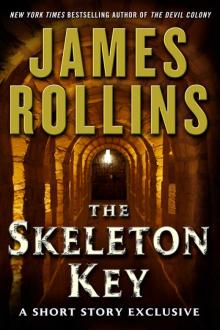 The Skeleton Key
The Skeleton Key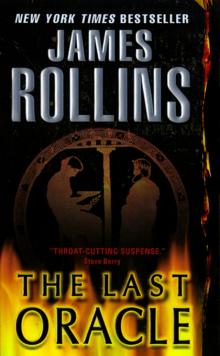 The Last Oracle
The Last Oracle The Judas Strain
The Judas Strain Black Order
Black Order Sandstorm
Sandstorm Ghost Ship
Ghost Ship The Devil Colony
The Devil Colony Subterranean
Subterranean The Doomsday Key
The Doomsday Key The 6th Extinction
The 6th Extinction Bloodline
Bloodline Jake Ransom and the Howling Sphinx
Jake Ransom and the Howling Sphinx The Midnight Watch
The Midnight Watch Map of Bones
Map of Bones The Demon Crown
The Demon Crown Deep Fathom
Deep Fathom Sigma Guide
Sigma Guide Kowalski's in Love
Kowalski's in Love Jake Ransom and the Skull King's Shadow
Jake Ransom and the Skull King's Shadow Excavation
Excavation The Seventh Plague
The Seventh Plague Altar of Eden
Altar of Eden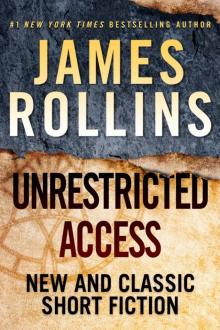 Unrestricted Access: New and Classic Short Fiction
Unrestricted Access: New and Classic Short Fiction Indiana Jones and the Kingdom of the Crystal Skull
Indiana Jones and the Kingdom of the Crystal Skull Crucible
Crucible The Eye of God
The Eye of God The Bone Labyrinth
The Bone Labyrinth The Last Odyssey: A Thriller
The Last Odyssey: A Thriller Unrestricted Access
Unrestricted Access Amazonia
Amazonia Blood Brothers: A Short Story Exclusive
Blood Brothers: A Short Story Exclusive Map of Bones: A Sigma Force Novel
Map of Bones: A Sigma Force Novel The Skeleton Key (sigma force)
The Skeleton Key (sigma force)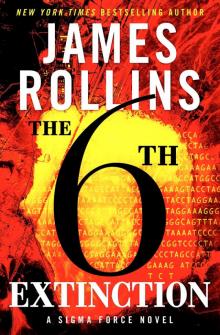 Sigma Force 10 - The Sixth Extinction
Sigma Force 10 - The Sixth Extinction Innocent Blood
Innocent Blood Map of Bones sf-2
Map of Bones sf-2 The Eye of God: A Sigma Force Novel
The Eye of God: A Sigma Force Novel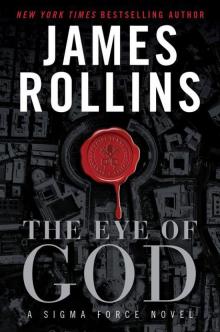 The Eye of God: A Sigma Force Novel sf-9
The Eye of God: A Sigma Force Novel sf-9 The Pit
The Pit Indiana Jones and the The Kingdom Of The Crystal Skull
Indiana Jones and the The Kingdom Of The Crystal Skull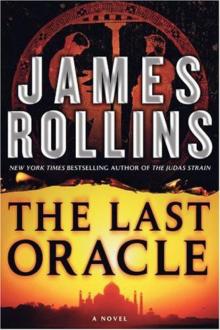 The Last Oracle (2008) sf-5
The Last Oracle (2008) sf-5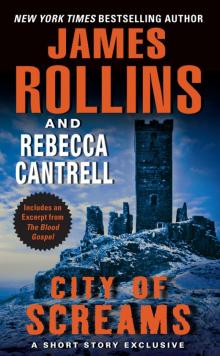 City of Screams
City of Screams The Doomsday Key and The Last Oracle with Bonus Excerpts
The Doomsday Key and The Last Oracle with Bonus Excerpts The Judas Strain sf-4
The Judas Strain sf-4 Blood Infernal
Blood Infernal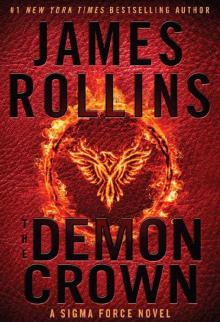 The Demon Crown: A Sigma Force Novel
The Demon Crown: A Sigma Force Novel War Hawk: A Tucker Wayne Novel
War Hawk: A Tucker Wayne Novel SANDSTORM sf-1
SANDSTORM sf-1 Bloodline: A Sigma Force Novel
Bloodline: A Sigma Force Novel Amazonia: a novel
Amazonia: a novel The Last Oracle: A Sigma Force Novel
The Last Oracle: A Sigma Force Novel City of Screams (the order of the sanguines)
City of Screams (the order of the sanguines)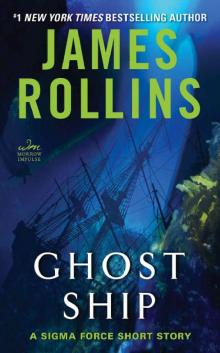 Ghost Ship: A Sigma Force Short Story
Ghost Ship: A Sigma Force Short Story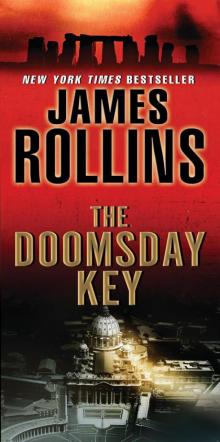 The Doomsday Key: A Sigma Force Novel
The Doomsday Key: A Sigma Force Novel